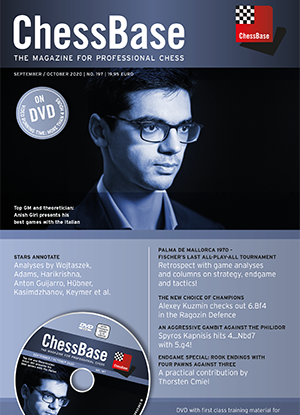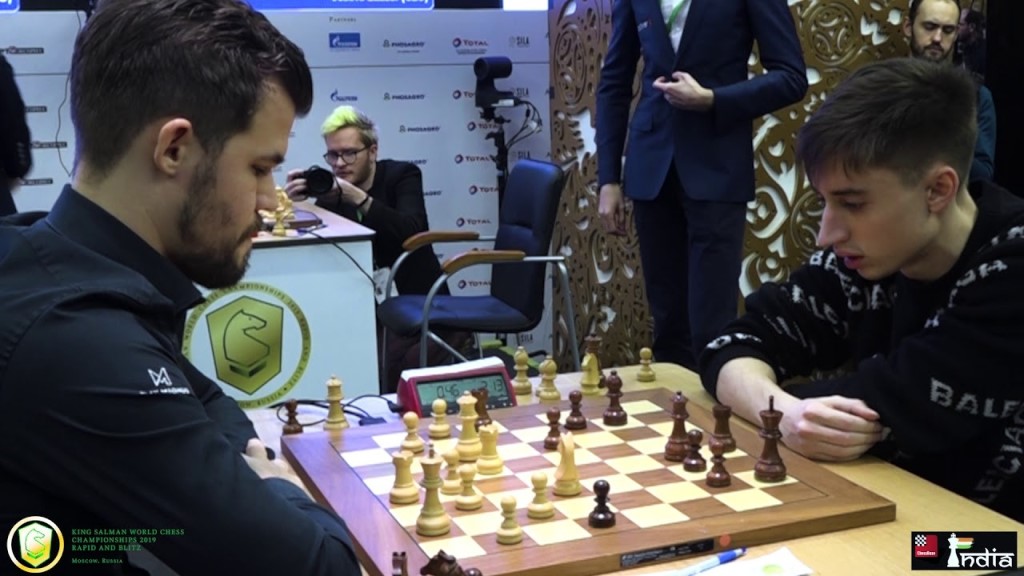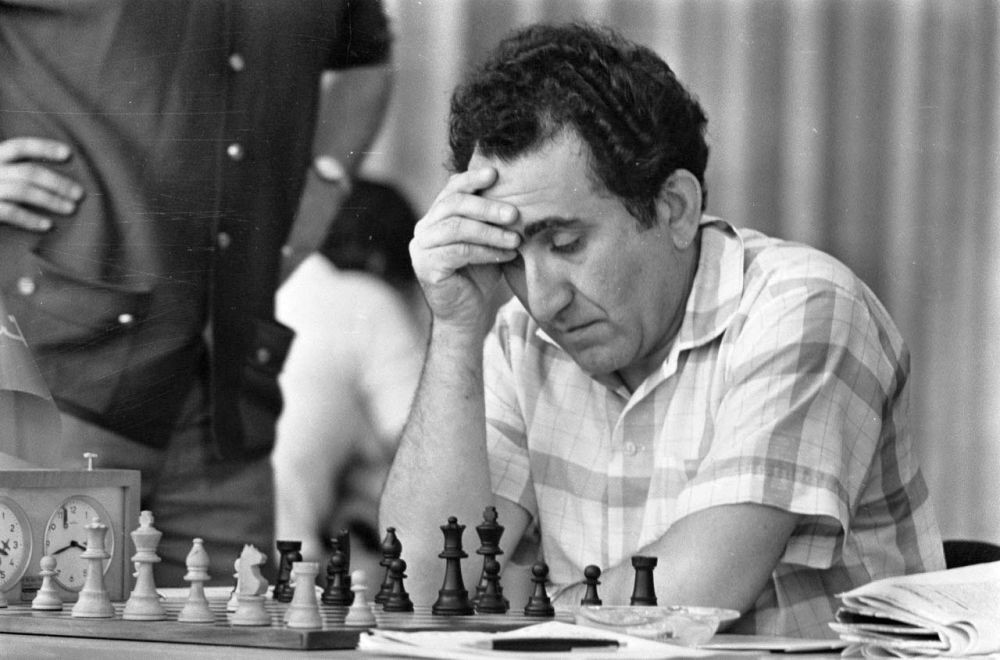Carlsen dominates

Even as I write these lines, Magnus Carlsen has won the Altibox Norway Chess Tournament. With Aronian, Caruana, Duda and Alireza Firouzja in the competition, it was a strong field. Magnus finished with 19.5 points ahead of Firouzja with 18.5 points and Aronian with 17.5 points who finished second and third respectively. It was still a close call for Magnus who lost to Duda and Aronian in the tournament.
Who else can challenge Magnus in coming years and how well would his predecessors, Anand and Kramnik fare with him? This issue offers a few answers, tentative if not final.
There are games from two major tournaments, Chessable Masters and Legends of Chess, here. Carlsen’s score in these events speaks for itself: +37 -6 =19. He won 20 games with White and 17 games with Black. In other words, he played for a win in every game (well, almost) whether he was White or Black.
One player who did challenge Magnus on his own turf was Anish Giri (seen on the cover of this issue).
The first challenge for young readers
In the Chessable Masters Final he did set problems for Magnus in a mini-match, scoring +1 -3 = 6. It was pretty close, with Anish losing chances to level scores till the very end.
Romain Edouard annotates one of them in this issue and perhaps young readers can give a try to the following position. Is there a win for White?
However, ardent Magnus fans would prefer to see a win by him. One of them is annotated by Peter Heine Nielsen in this issue. Here is the second challenge for young readers. How does White win in this position?
The second challenge for young readers
Magnus offers a lesson in sportsmanship
Magnus did manage to lose three games in this tournament, to Giri, Dubov and Ding Liren. The last of them is a “miniature” and for a moment it leaves you baffled and then you remember…
What happened was this: Ding Liren had to abandon their previous game as the internet connection was lost at his end. Magnus was understanding and sympathetic. He had no wish to score over his rival with a mere technicality. But then the result could not be reversed. So he deliberately “lost” this game so that he and his opponent could play on level terms. The chess world applauded the gesture.
Thereafter, Magnus went on to win the blitz play-off with Ding Liren
A daredevil called Daniil Dubov
 The Budapest Gambit is an exciting and fun way to play against 1.d4 and 2.c4 - replying with 1...Nf6 and 2...e5. In this video you will learn how to pose problems for White with this fascinating opening.
The Budapest Gambit is an exciting and fun way to play against 1.d4 and 2.c4 - replying with 1...Nf6 and 2...e5. In this video you will learn how to pose problems for White with this fascinating opening.
Dubov in action against Magnus Carlsen at the World Blitz Championship in 2019
Chess players often tend to overlook the performance of GMs who do not finish first or second in a tournament. Reviewers also skip over the play of “also-rans” who end up a little below the prize list. But when they include a player like Dubov some justice has to be done to the performance.
This young player is a bit of a daredevil and a hit-or-miss player. He beat Magnus with Black and then went down to Nakamura. The game is annotated by Romain Edouard in this issue. I have resisted the temptation to give it here. A brilliant performance by Nakamura. These two players have been going after each other in event after event and the games are uncompromising battles.

Dubov in action against Nakamura at the 2018 edition of the Tal Memorial
Nakamura is one player who has drawn level with Carlsen time and again, and we shall see more of him in subsequent CBM reviews.
A clash of generations
Once upon a time it was customary to describe great players of the past as chess legends: Lasker, Capablanca, Alekhine and so on. The players of the day were not called legends, for the simple reason that they were still alive and kicking! Not any longer. It is not enough to call older champions as veterans, but as Legends. But then we live in the age of marketing, what matters is hype.
Any way, we had veterans, Anand, Kramnik, Ivanchuk and Gelfand competing with the younger brigade — Giri, Ding Liren, Nepomniachtchi led by Carlsen. As it happened, among the veterans, only Ivanchuk was able to cope with Carlsen, and he managed to beat him in a long game. Both Anand and Kramnik lost to Carlsen.
Vlad went down in flames when he sacrificed one piece after another only to meet an iron clad defence by Magnus.
 This DVD allows you to learn from the example of one of the best players in the history of chess and from the explanations of the authors (Pelletier, Marin, Müller and Reeh) how to successfully organise your games strategically, consequently how to keep y
This DVD allows you to learn from the example of one of the best players in the history of chess and from the explanations of the authors (Pelletier, Marin, Müller and Reeh) how to successfully organise your games strategically, consequently how to keep y
Vladimir Kramnik facing Magnus Carlsen at the 2019 Tata Steel Masters | Photo: Alina l'Ami
A magnificent struggle
The veterans may not have had the best sporting result in this tournament. But time and again they shone in creative play. The following game is a fine example, and in this issue it is annotated in depth by Rustam Kasimdzhanov. I have studied his analysis and cross-checked it with that of others like Evgeny Gleizerov (64 Chess Review) and Aleksandar Colovic (British Chess Magazine):
“This game is a legend in itself!”, commented Rustam Kasimdzhanov.
As for Carlsen, he played a different kind of game. The following encounter has a touch of jujitsu:
An intriguing performance!
 Considered a master of prophylaxis, Petrosian sensed dangers long before they actually became acute on the board. In his prime, Petrosian was almost invincible. Let our authors introduce you into the world of Tigran Petrosian.
Considered a master of prophylaxis, Petrosian sensed dangers long before they actually became acute on the board. In his prime, Petrosian was almost invincible. Let our authors introduce you into the world of Tigran Petrosian.
Tigran Petrosian | Photo: Netherlands’ National Archives
Harry Golombek once described the style of late world champion Tigran Petrosian as “the art of doing nothing”. Often it was anything but that. The same may be said of Magnus. He waits like a crouching tiger and pounces on his opponent right when his opponent does not suspect anything and goes ahead with his “attack”. Here it worked.
Note that it does not work every time. In the recent St. Louis Online Rapid and Blitz Tournament, Magnus tried the same “waiting” policy against Nepo, and he was crushed!
Biel Chess Festival : Happy days are here again
The third part of the games’ database in this issue consists of games from the Biel Chess Festival. This was the first major over-the-board tournament in the post-pandemic world.
The organizers took extraordinary precautions to make it safe for participants. The event had three formats: standard, rapid and blitz. Radoslav Wojtaszek won the triathlon ahead of Harikrishna and Michael Adams. Harikrshna, who was placed second, did beat eventual winner Wojtaszek in the main edition of the tournament with standard time control.

Radoslaw Wojtaszek v Pentala Harikrishna in round 5 | Photo: Simon Bohnenblust
However, he was let down by his poor performance in blitz. Wojtaszek, on the other hand, was better in blitz, sidestepping little traps as in the following position with Michael Adams.
The third challenge for young readers
The three prizewinners have annotated two games each in this issue. I would have loved to see Harikrishna’s annotations to his game with Wojtaszek (readers can find them in New in Chess Magazine, 06/2020).
In general Adams did not do himself justice in this tournament. However, this veteran still has much chess left in him and hopefully, he would better next time.

Time for a friendly chat | Photo: Simon Bohnenblust
The main database of the issue has 733 recent games of which 25 are deeply annotated. Apart from the GMs I have already mentioned, the commentators include Boris Gelfand and Peter Heine Nielsen, among others.
A major contribution is made by Romain Edouard, who has annotated 11 games. It may be noted that there are more annotated games in the sections on opening theory and training. Well, practice makes perfect.
In the next part of the review I shall deal with the rest of the magazine.
To be continued
Specials: Anish Giri presents his best games with the Italian + Palma de Mallorca 1970 - an extensive retrospect. Analyses from Biel 2020 by Wojtaszek, Harikrishna, Adams, Keymer et al. Videos by Marin, King and Ris. 11 opening articles and much more!
Links






























